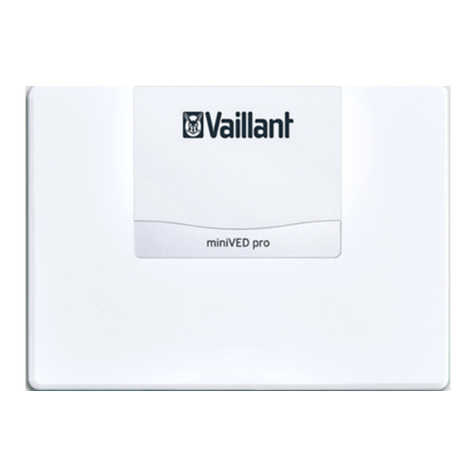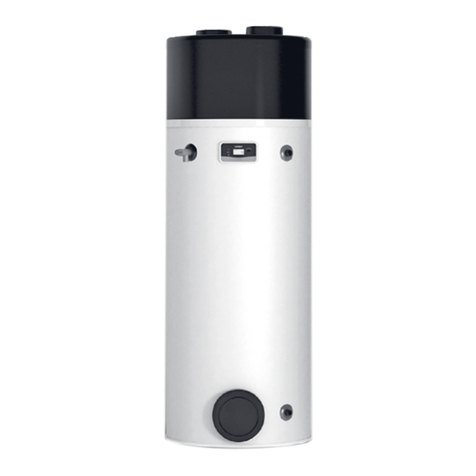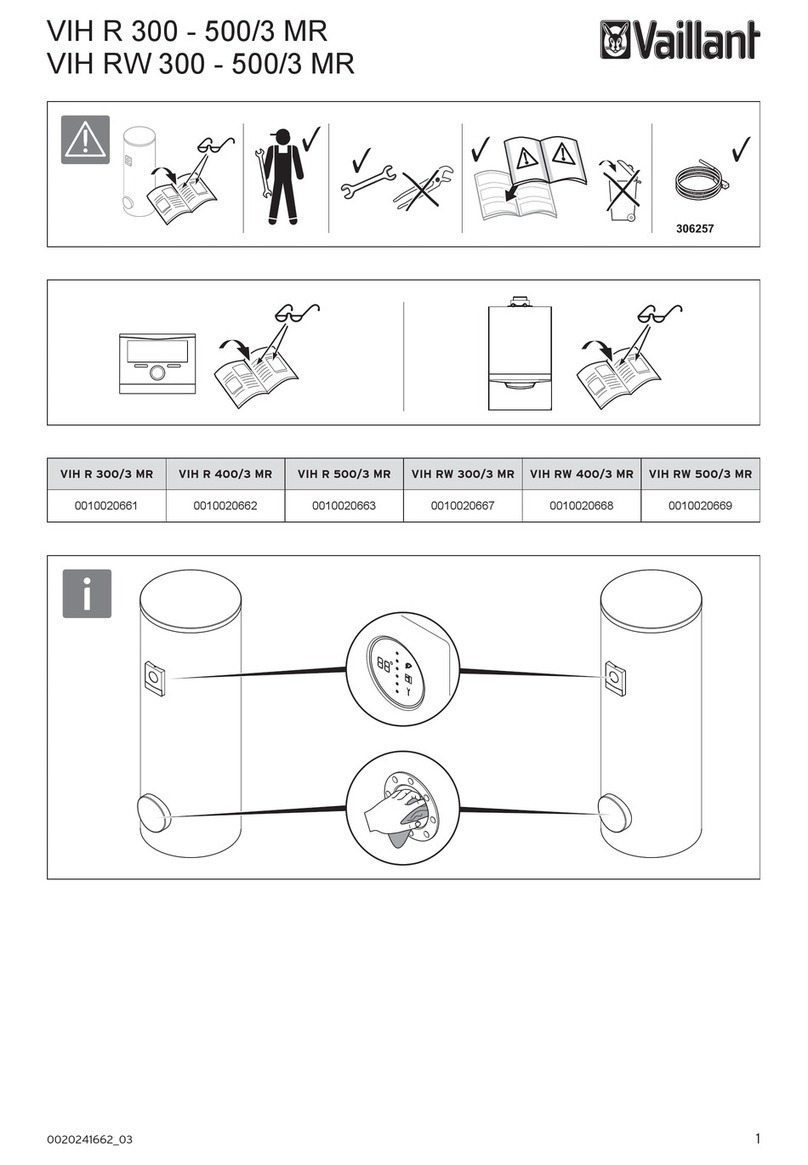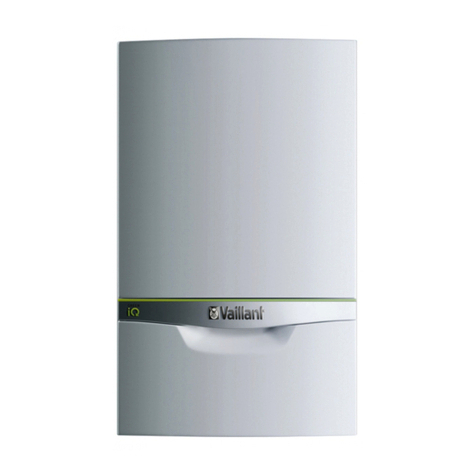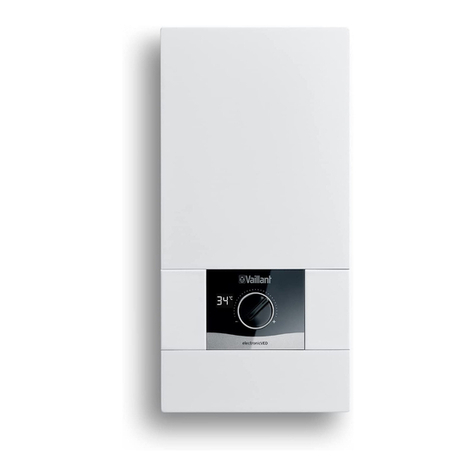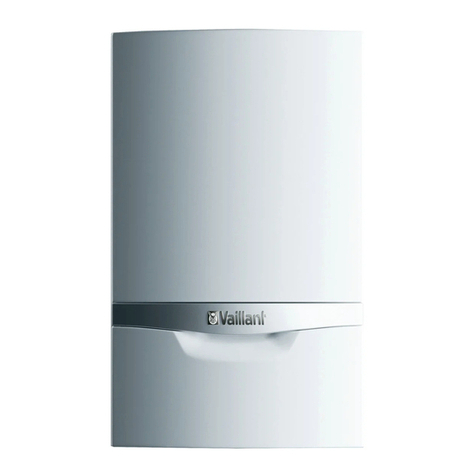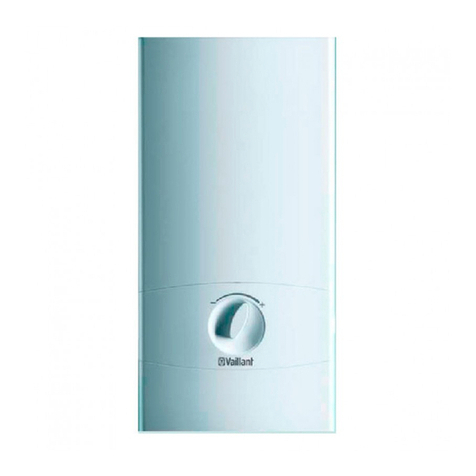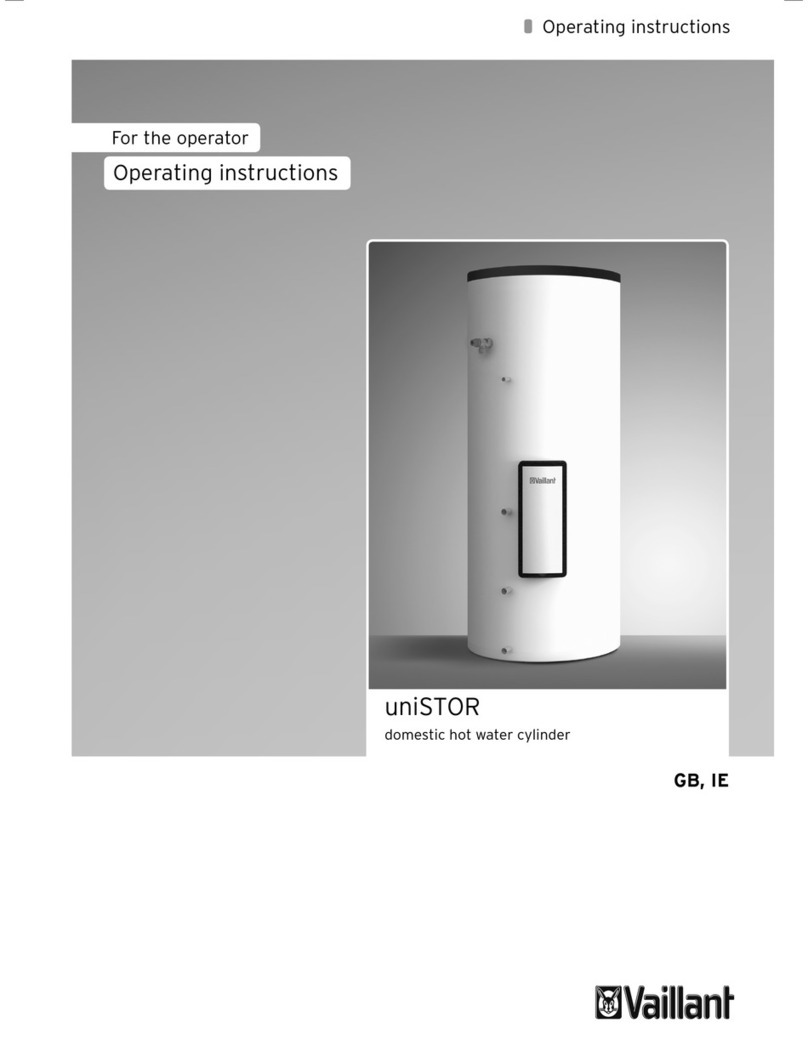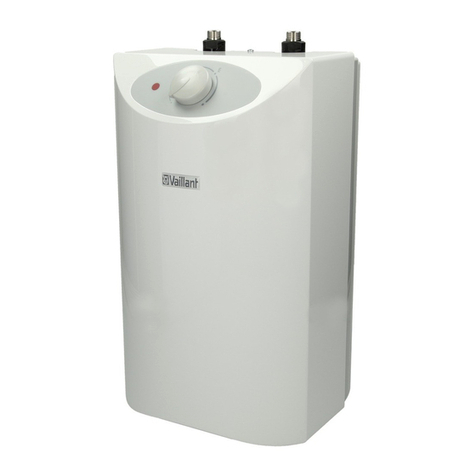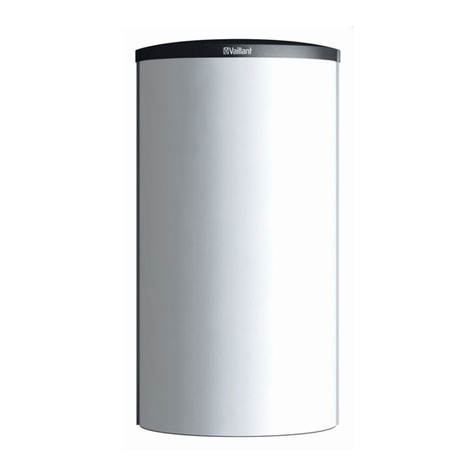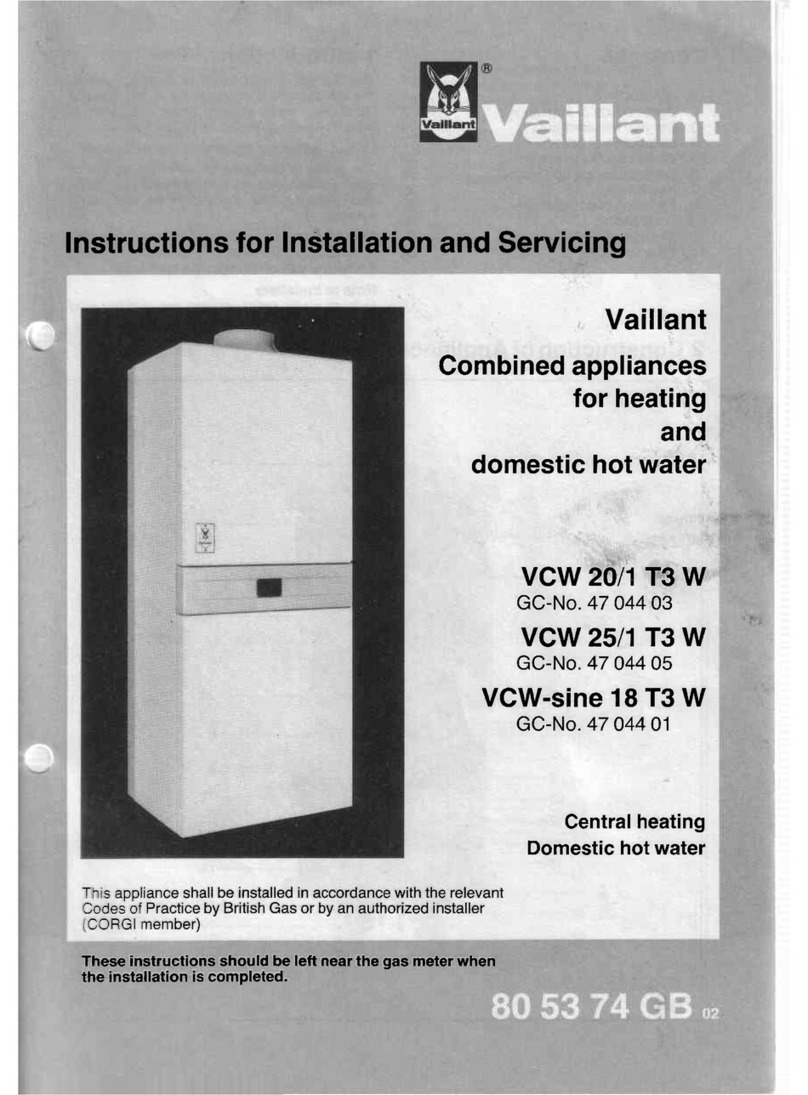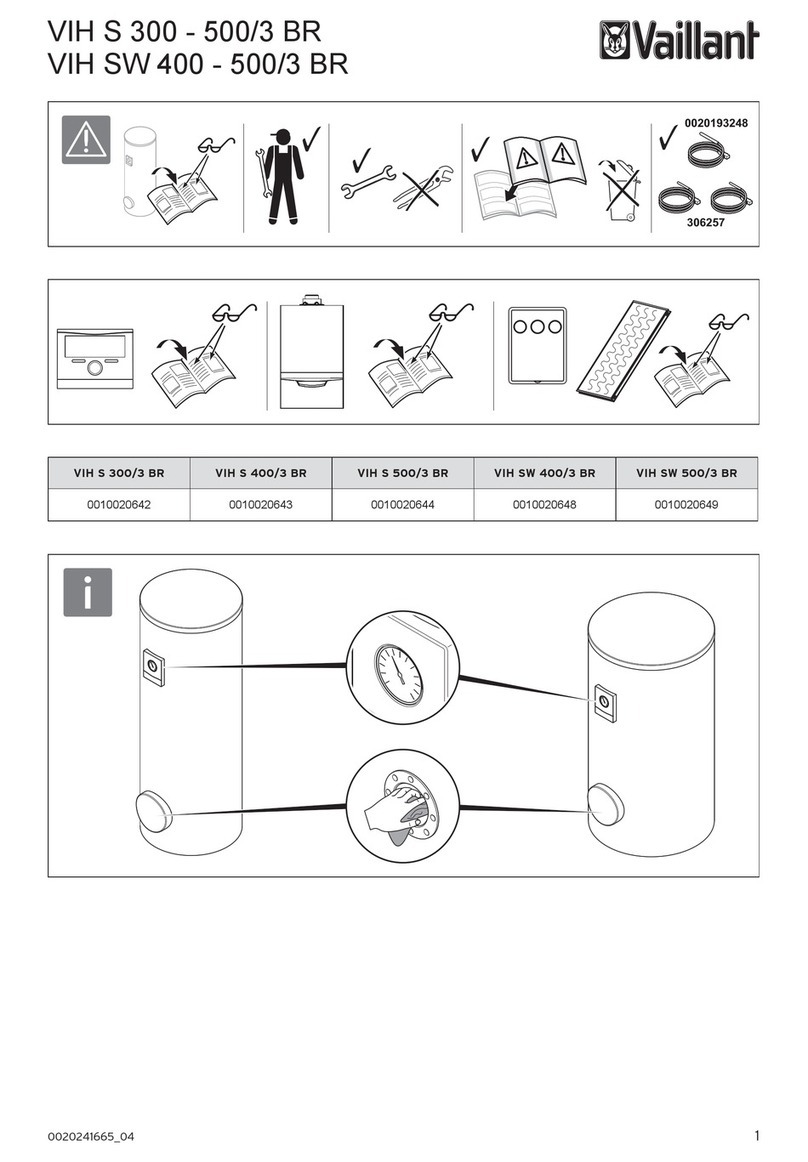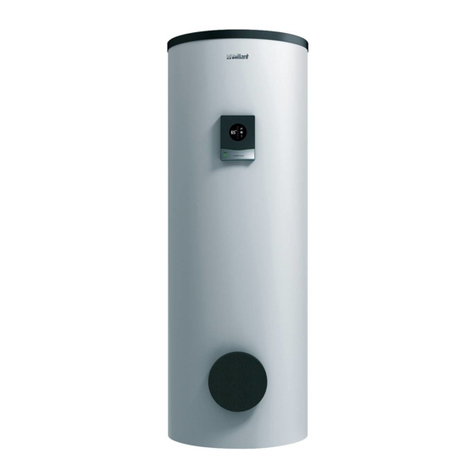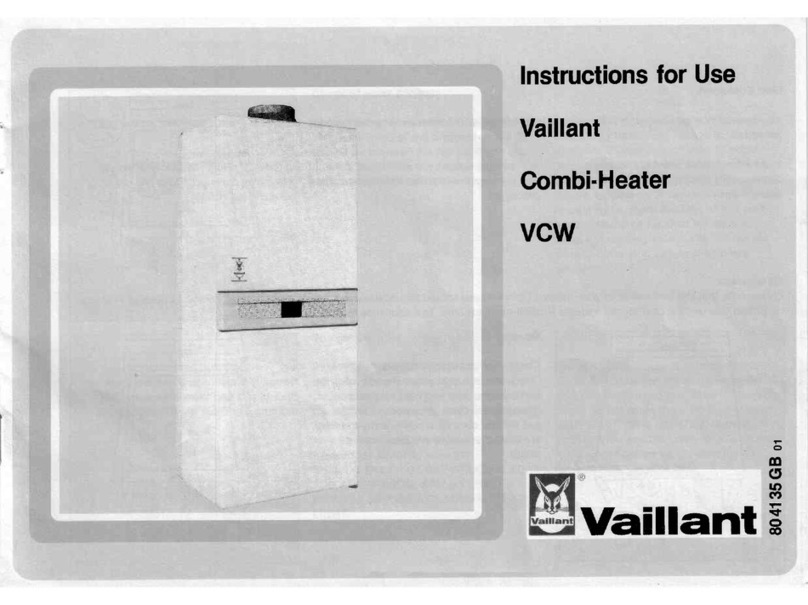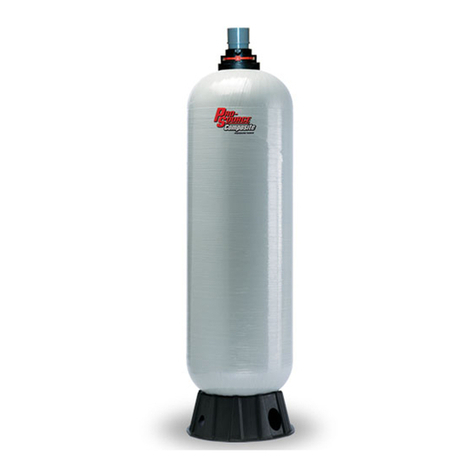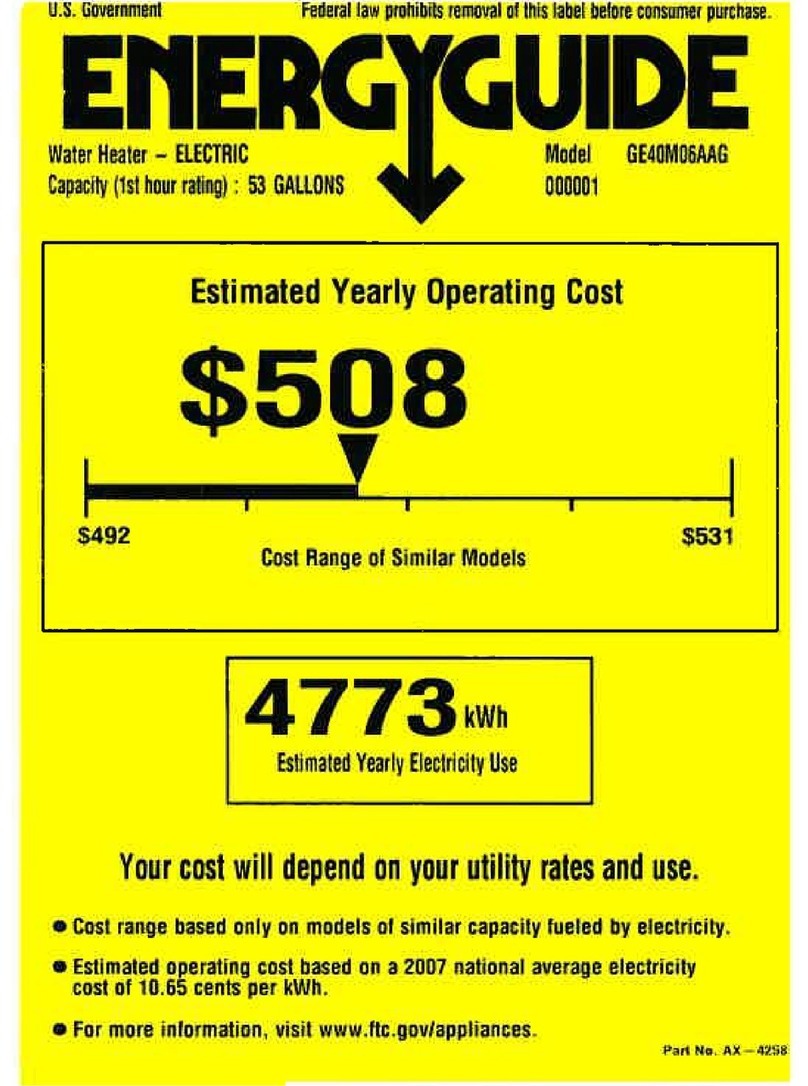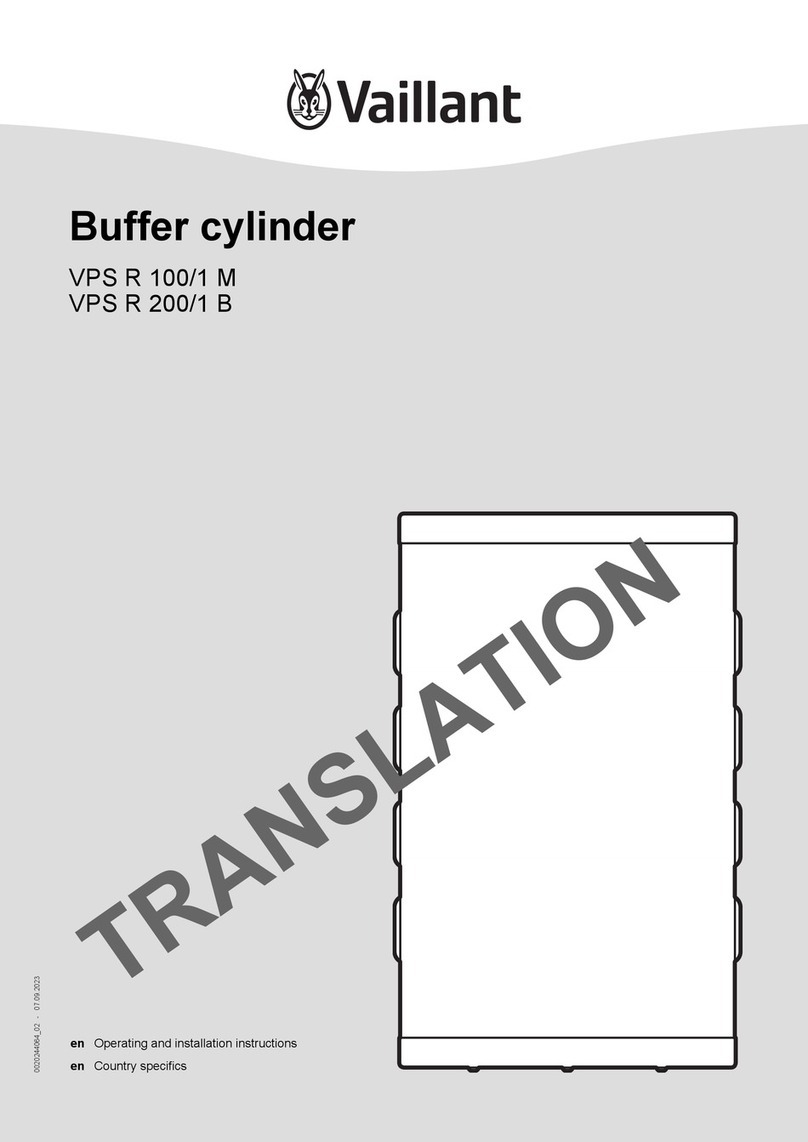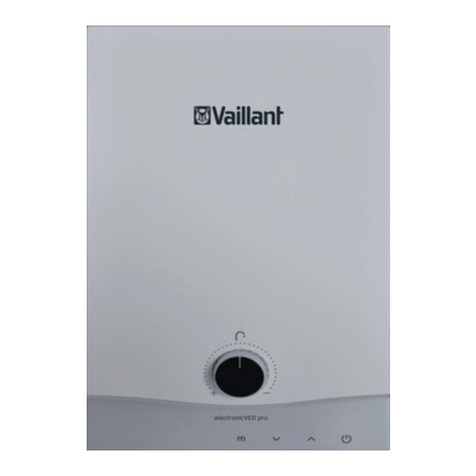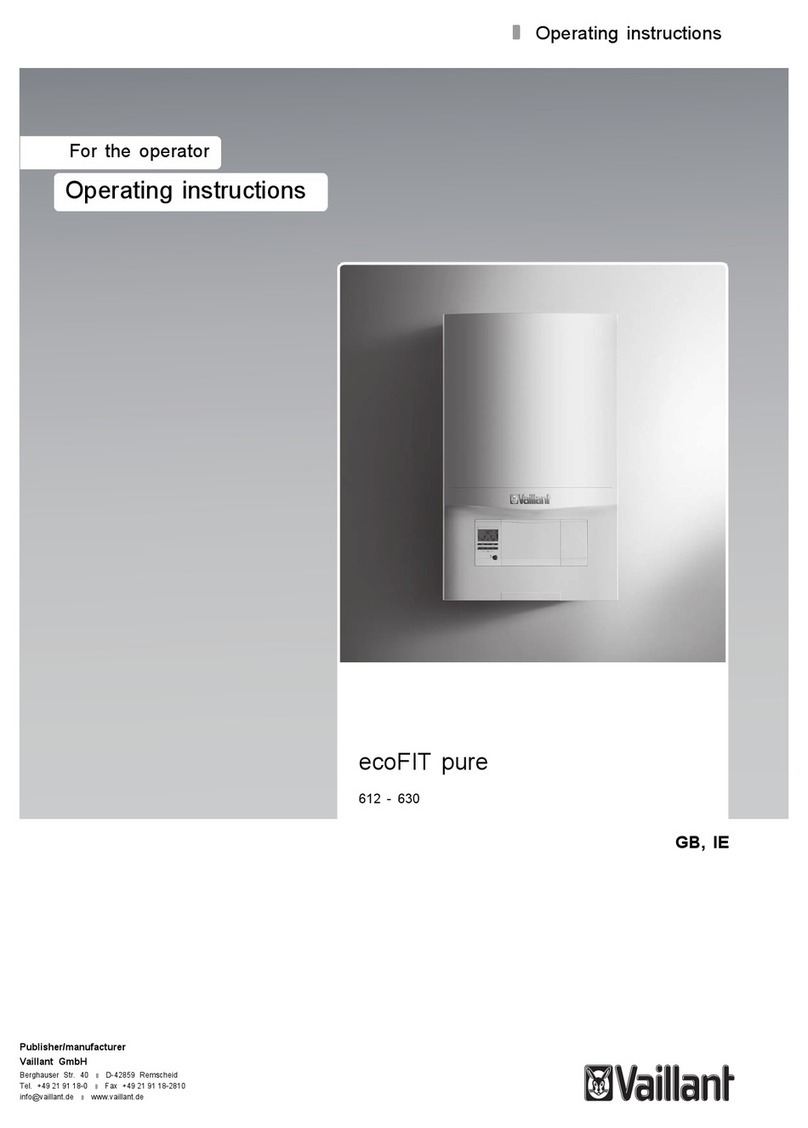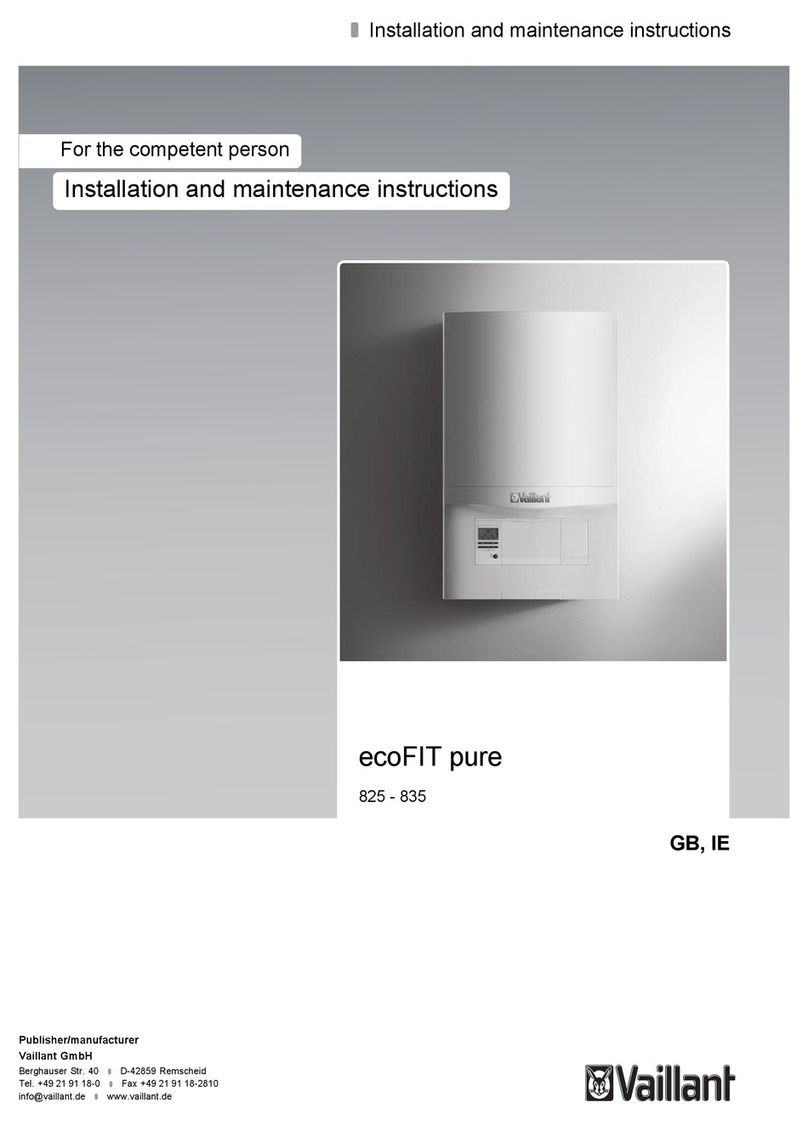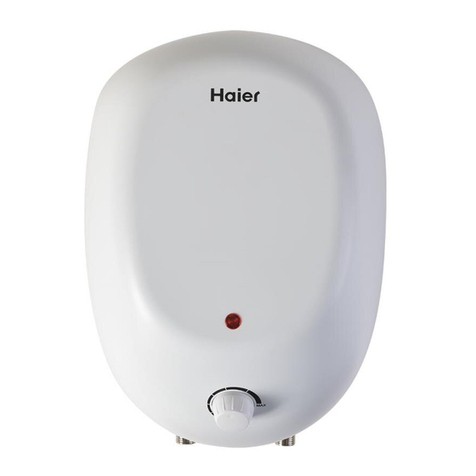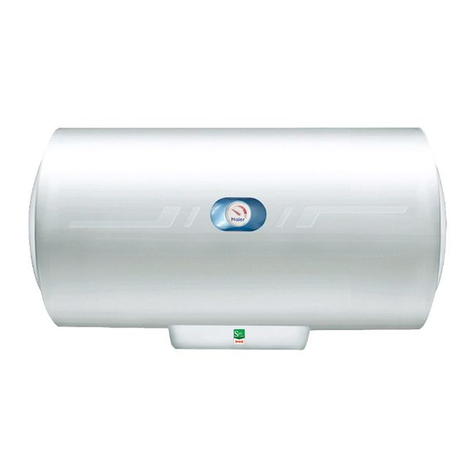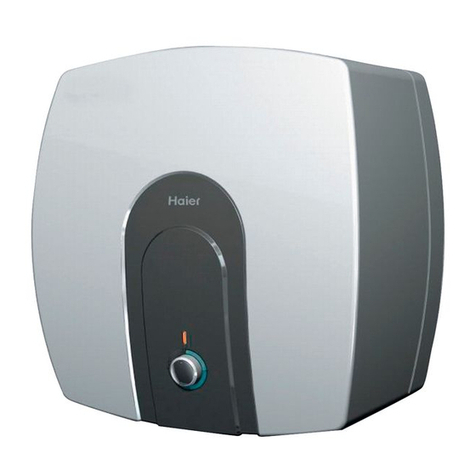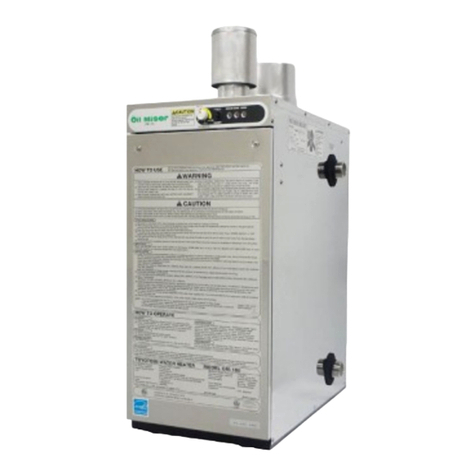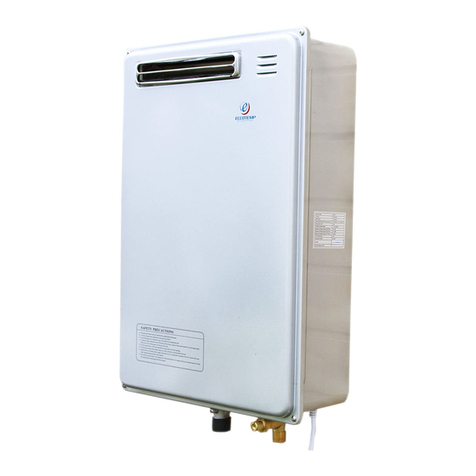
3 System
6Instructions for use auroFLOW plus 0020160592_00
–the anti-cycling time of ten minutes after the last cylinder
charging has expired
–the safety temperature limit of 110 °C in the solar circuit
is not exceeded (STW2)
–the safety temperature limit in the buffer cylinder (4) is
not exceeded (STW1)
–the temperature has fallen by at least 15 K following ac-
tivation of a safety cut-out
–there are no faults (e.g. sensor faults, activated safety
temperature monitor)
–activation of the solar pump is enabled (only if a system
controller is connected)
The solar control in the solar charger deactivates the solar
pump whenever
–the maximum cylinder temperature is reached
–current solar radiation is < 250 W
–there is a fault, see fault message (→Page 9)
Every time the solar pump is switched on, a filling phase is
started. The solar pump ((P1) and/or (P2)) is now working
at maximum power and pumps the solar fluid via the solar
return (2) into the collector field. The solar fluid then forces
the air out of the solar return and the collector field into the
solar flow pipe and the storage tank.
In the collector field, the solar fluid is heated up, some of
which can then evaporate. The vapour mixes with the air that
is still present.
The continued flow of the solar fluid is supported by the
downward gradient of the solar flow pipe (9). The air and
solar fluid mixture passes through the solar flow pipe to the
heat exchanger (3) in the solar charger. The heat exchanger
transfers the heat energy of the solar fluid to the heating
water in the buffer cylinder charging circuit. After a specified
filling time, the solar control reduces the output of the solar
pump. The filling phase is then completed.
If (T1) measures a temperature > 50 °C and > activation
temperature (default setting: 15 K), the solar control activ-
ates the cylinder charging pump (P3) in the solar charger.
The heating water then circulates from the heat exchanger to
the buffer cylinder.
The temperature sensors (T3) and (T4) in the flow (5) and
return (6) of the buffer cylinder charging circuit as well as a
flow sensor (Flowsensor) enable the solar control to meas-
ure the solar yield.
The solar fluid flows back from the heat exchanger into the
storage tank. The tank volume dimensions are such that the
air bubbles from the solar fluid are separated out before the
solar fluid is pumped further by the solar pump.
When the solar system heats up, the solar fluid and the air
expand. The pressure of the air enclosed in the solar sys-
tem increases slightly as a result. The enclosed air in the
system therefore fulfils the role of an expansion vessel. The
increased pressure is necessary and must not be discharged
in any way. For this reason, an air vent must not be fitted in
the solar system.
If there is a fault, an expansion relief valve (7) protects the
solar plant from prohibited overpressure.
3.2 Control functions of the system
With the help of the solar control integrated in the solar char-
ger, the solar charger can charge a buffer cylinder. Whether
or not the buffer cylinder is charged depends on the cylinder
temperature and the current solar radiation.
If coordination with other heat generators of the heating in-
stallation is required, a system controller is needed.
3.2.1 Range of available functions for the
integrated controller
The auroFLOW plus solar system is regulated by the integ-
rated, microprocessor-controlled solar control.
3.2.1.1 Differential temperature control system
The solar control works according to the differential tem-
perature control principle. When the temperature difference
(temperature of collector - temperature of cylinder) is greater
than the switch-on differential, the solar control switches on
the solar pump. The internal sensors in the solar charger de-
termine the power through the collector field. When power is
no longer available from the collector field, the solar control
switches off the solar pump.
3.2.1.2 Annual calendar
The solar control is fitted with an annual calendar that en-
ables automatic adjustment between summer and winter
time. During installation, the competent person enters the
current date to activate the annual calendar.
Note
Note that, in the event of a power failure, the solar
control is equipped with a reserve power supply
of 30 minutes. The internal clock stops after 30
minutes. The calendar does not continue run-
ning once the voltage supply is restored. In this
instance, the time must be reset. Check the cur-
rent date.
Note
If a system controller is connected, it is not neces-
sary to set the date, time or summer time.
3.2.2 Combination with system controller
The product can be combined with the auroMATIC VRS 620
system controller or the controller of the geoTHERM heat
pumps.
If the product is combined with the auroMATIC VRS 620
system controller, we recommend the installation of a VPM
Wdrinking water station.

